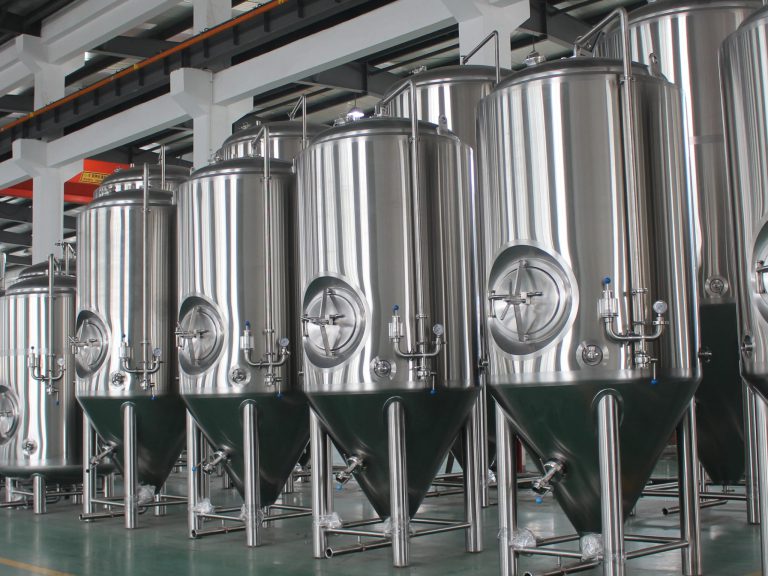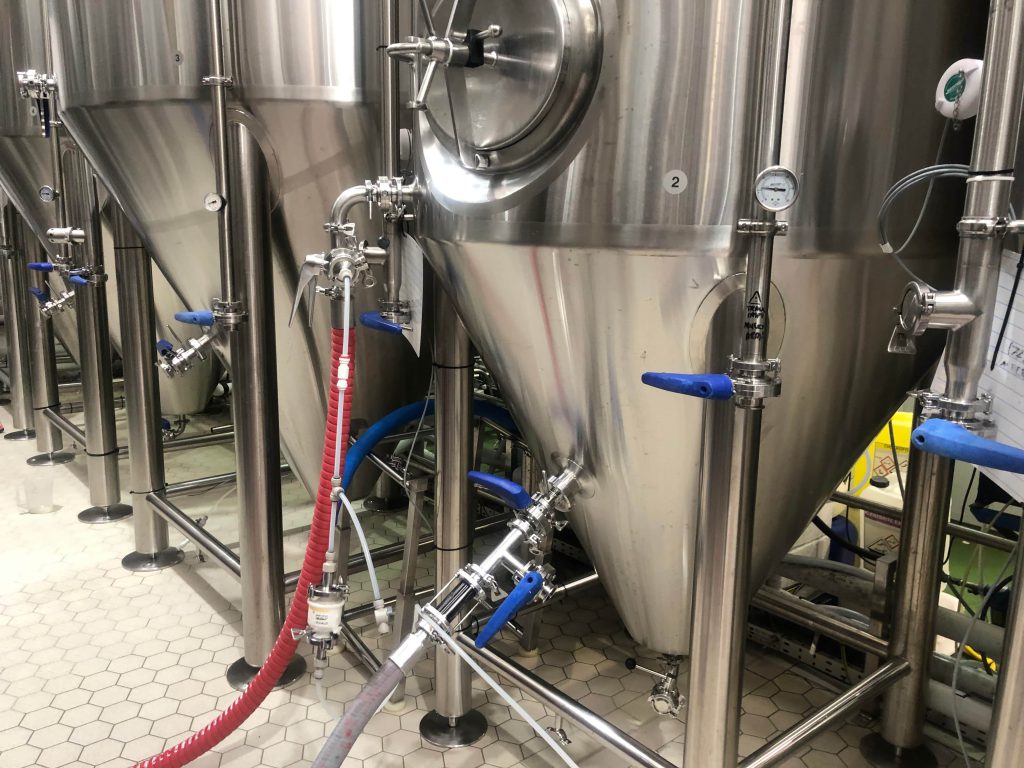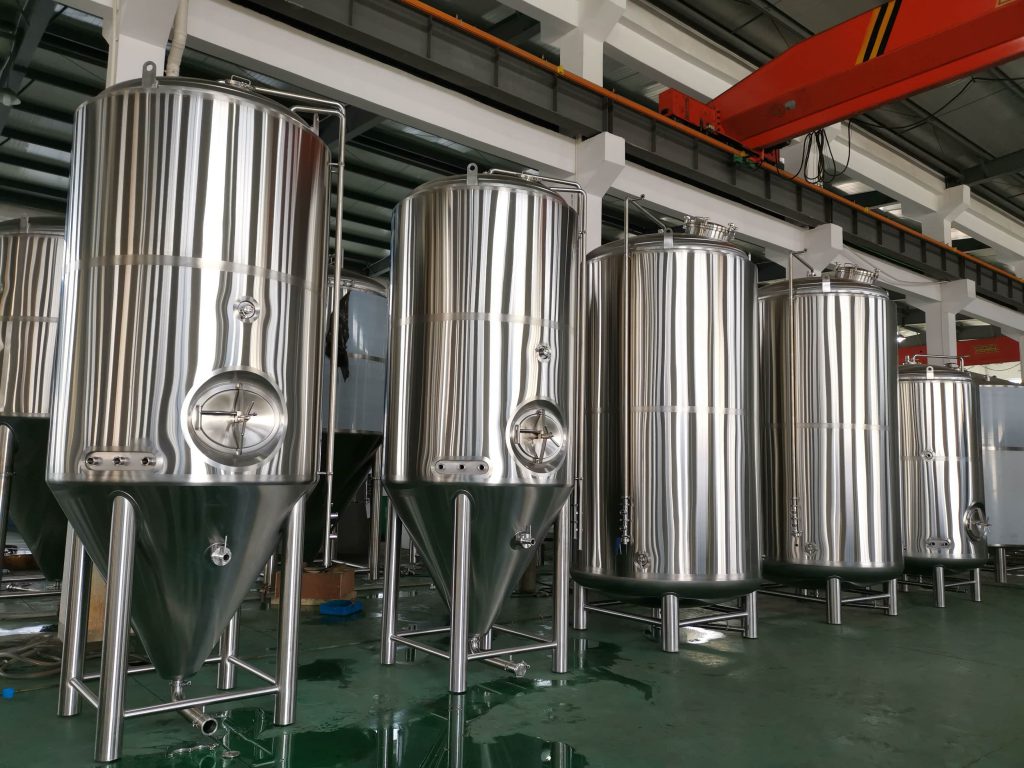Einführung

Die Gründung eines Craft-Beer-Unternehmens erfordert sorgfältige Planung, insbesondere wenn es um die Auswahl der richtigen Mikrobrauerei-Ausrüstung geht. Der Erfolg Ihrer Brauerei hängt nicht nur von der Qualität Ihres Biers ab, sondern auch von der Effizienz und Effektivität Ihrer Brauausrüstung. Angesichts der zahlreichen auf dem Markt verfügbaren Optionen kann die Auswahl der besten Mikrobrauerei-Ausrüstung eine entmutigende Aufgabe sein. Dieser Leitfaden soll den Prozess vereinfachen, indem er wichtige Überlegungen, wichtige Ausrüstung und nützliche Tipps zur Auswahl der besten Werkzeuge für Ihre Brauanforderungen abdeckt.
Verständnis Mikrobrauereiausrüstung
Die Ausrüstung einer Mikrobrauerei umfasst alle Werkzeuge und Maschinen, die zur Herstellung von Craft Beer in kleinerem Maßstab als in großen kommerziellen Brauereien erforderlich sind. Diese Ausrüstung ist auf die besonderen Bedürfnisse von Craft-Brauern zugeschnitten und ermöglicht Kreativität und Qualitätskontrolle im Brauprozess. Das Verständnis der verschiedenen Gerätetypen und ihrer Funktionen ist für die Einrichtung einer effizienten Mikrobrauerei von entscheidender Bedeutung.
Schlüsselkomponenten der Mikrobrauereiausrüstung
- Braukessel: Diese werden zum Kochen der Würze und zum Hinzufügen von Hopfen verwendet. Sie sind in verschiedenen Größen und Materialien erhältlich, wobei Edelstahl aufgrund seiner Haltbarkeit und Korrosionsbeständigkeit am häufigsten verwendet wird.
- Gärtanks: Diese Tanks sind für den Fermentationsprozess unerlässlich und in verschiedenen Formen und Größen erhältlich. Sie bestehen häufig aus Edelstahl und verfügen über Funktionen zur Temperaturregelung.
- Kühlsysteme: Um während der Gärung die richtige Temperatur zu halten, ist eine gute Kühlung entscheidend. Gängige Kühlsysteme sind Plattenkühler und Glykolsysteme.
- Pumpensysteme: Pumpen werden zum Transport von Flüssigkeiten zwischen den verschiedenen Phasen des Brauprozesses eingesetzt. Sie müssen zuverlässig sein und hohen Temperaturen und Drücken standhalten.
- Reinigungs- und Desinfektionsgeräte: Beim Brauen ist Sauberkeit von entscheidender Bedeutung. Dazu gehören verschiedene Werkzeuge und Chemikalien zum Reinigen und Desinfizieren Ihrer Geräte.
- Steuerungssysteme: Moderne Mikrobrauereien nutzen häufig fortschrittliche Kontrollsysteme zur Überwachung und Verwaltung der Brauparameter und gewährleisten so Konsistenz und Qualität.
Arten von Mikrobrauereiausrüstung
Die Wahl der richtigen Mikrobrauereiausrüstung hängt von Ihren spezifischen Anforderungen und der Größe des Betriebs ab. Im Folgenden sind einige gängige Typen aufgeführt:
Selbstgebrautes Bier vs. professionelle Ausrüstung
- Homebrew-Ausrüstung: Normalerweise kleiner und günstiger, geeignet für Hobbybastler und Kleinserienproduktion.
- Professionelle Ausrüstung: Größer und ausgefeilter, für höhere Produktionsmengen ausgelegt und mit erweiterten Funktionen für präzises Brühen ausgestattet.
Batch- vs. kontinuierliche Brausysteme
- Batch-Systeme: Brauen Sie jeweils nur eine Charge. Ideal für Handwerksbrauereien, die sich auf kleine, einzigartige Chargen konzentrieren.
- Kontinuierliche Systeme: Kontinuierliches Brauen, bietet höhere Effizienz und Konsistenz, geeignet für größere Betriebe.
Manuelle vs. automatisierte Systeme
- Manuelle Systeme: Erfordert mehr praktisches Engagement, kann aber weniger kostspielig sein.
- Automatisierte Systeme: Bietet mehr Kontrolle und Konsistenz mit fortschrittlicher Technologie zur Überwachung und Anpassung der Brühparameter.
Wichtige Überlegungen zur Auswahl Mikrobrauereiausrüstung
Bei der Auswahl der besten Mikrobrauereiausrüstung müssen mehrere Schlüsselfaktoren bewertet werden, um sicherzustellen, dass sie Ihren Brauanforderungen und Geschäftszielen entspricht.
Produktionskapazität
Bewerten Sie Ihren aktuellen und zukünftigen Produktionsbedarf. Die Ausrüstung sollte in der Lage sein, Ihr geplantes Volumen zu bewältigen und gleichzeitig Raum für Wachstum zu lassen. Hier ist eine grundlegende Tabelle, die Ihnen bei der Bestimmung der richtigen Kapazität hilft:
| Gerätetyp | Kleiner Maßstab (1-5 BBL) | Mittlerer Maßstab (5-20 BBL) | Großer Maßstab (20+ BBL) |
|---|---|---|---|
| Braukessel | 1-5 BBL | 5-20 Bälle | 20+ BBL |
| Gärtank | 1-5 BBL | 5-20 Bälle | 20+ BBL |
| Kühlsystem | Plattenkühler | Glykolsystem | Glykolsystem |
| Pumpensystem | Kleine Pumpe | Mittlere Pumpe | Große Pumpe |
Budget
Bestimmen Sie Ihr Budget für die Ersteinrichtung und die laufenden Wartungskosten. Obwohl höherwertige Geräte oft erweiterte Funktionen bieten, ist es wichtig, die Kosten mit Ihren geschäftlichen Anforderungen und Zielen in Einklang zu bringen.
Raum und Layout
Bewerten Sie den verfügbaren Platz in Ihrer Brauerei. Größe und Anordnung der Geräte können sich auf die Effizienz und Sicherheit der Arbeitsabläufe auswirken. Eine ordnungsgemäße Planung kann Überbelegung verhindern und einen reibungslosen Betrieb gewährleisten.
Benutzerfreundlichkeit und Wartung
Entscheiden Sie sich für Geräte, die benutzerfreundlich und leicht zu warten sind. Komplizierte Systeme können zu längeren Ausfallzeiten und höheren Wartungskosten führen. Suchen Sie nach Geräten mit klaren Anweisungen und zuverlässigem Kundensupport.
Qualität und Haltbarkeit
Investieren Sie in hochwertige Geräte, um Langlebigkeit und gleichbleibende Leistung sicherzustellen. Edelstahl ist aufgrund seiner Haltbarkeit und einfachen Reinigung eine gängige Wahl.
So richten Sie Ihre Mikrobrauerei ein: Schritt für Schritt

Um einen reibungslosen Ablauf zu gewährleisten, sind für die Gründung einer Mikrobrauerei mehrere Schritte erforderlich:
Planung und Entwurf
Erstellen Sie einen detaillierten Plan und ein Layout für Ihre Mikrobrauerei und berücksichtigen Sie dabei die Platzierung der Geräte, den Arbeitsablauf und die Sicherheitsvorschriften.
Kauf von Ausrüstung
Kaufen Sie die erforderliche Ausrüstung auf Grundlage Ihrer Bedarfsanalyse bei seriösen Lieferanten. Stellen Sie sicher, dass Sie die richtige Installation und Schulung erhalten.
Installation und Setup
Installieren Sie das Gerät gemäß den Herstellerrichtlinien. Eine ordnungsgemäße Installation ist für optimale Leistung und Sicherheit von entscheidender Bedeutung.
Prüfung und Kalibrierung
Testen und kalibrieren Sie die Ausrüstung, bevor Sie mit der Produktion beginnen. Stellen Sie sicher, dass alle Systeme ordnungsgemäß funktionieren, und nehmen Sie die erforderlichen Anpassungen vor.
Schulungspersonal
Schulen Sie Ihr Personal im Umgang und in der Wartung der Geräte. Eine angemessene Schulung kann die Effizienz steigern und das Fehlerrisiko verringern.
Abschluss
Die beste Wahl Mikrobrauereiausrüstung ist ein entscheidender Schritt beim Aufbau eines erfolgreichen Craft-Beer-Geschäfts. Indem Sie die Arten der Ausrüstung verstehen, wichtige Überlegungen bewerten und renommierte Marken auswählen, können Sie sicherstellen, dass Ihre Brauerei effizient arbeitet und qualitativ hochwertiges Bier produziert. Die Investition in die richtige Ausrüstung verbessert nicht nur Ihren Brauprozess, sondern trägt auch zum langfristigen Erfolg Ihres Craft-Beer-Geschäfts bei.
Häufig gestellte Fragen
Was ist der wichtigste Faktor bei der Auswahl Mikrobrauereiausrüstung?
Der wichtigste Faktor ist die Ermittlung Ihres Produktionskapazitätsbedarfs. Die Ausrüstung sollte Ihren aktuellen und zukünftigen Produktionszielen entsprechen, um Effizienz und Skalierbarkeit sicherzustellen.
Wie oft sollte die Ausrüstung einer Mikrobrauerei gewartet werden?
Regelmäßige Wartung ist für optimale Leistung entscheidend. Die Geräte sollten regelmäßig gereinigt und überprüft werden. Bei Bedarf sollten gründlichere Wartungsarbeiten durchgeführt werden.
Kann ich beginnen mit Homebrew-Ausrüstung und später aktualisieren?
Ja, viele Craft-Brauer beginnen mit Heimbrauausrüstung und rüsten diese nach und nach auf, wenn ihr Geschäft wächst. Stellen Sie sicher, dass alle Upgrades mit Ihrer vorhandenen Ausrüstung kompatibel sind.
Wie wähle ich zwischen manuellen und automatisierten Systemen?
Berücksichtigen Sie Ihr Budget, das gewünschte Maß an Kontrolle und das Produktionsvolumen. Automatisierte Systeme bieten höhere Präzision und Konsistenz, sind jedoch mit höheren Kosten verbunden.
Welches Material eignet sich für Braukessel am besten?
Edelstahl gilt aufgrund seiner Haltbarkeit, einfachen Reinigung und Korrosionsbeständigkeit allgemein als das beste Material für Braukessel.

